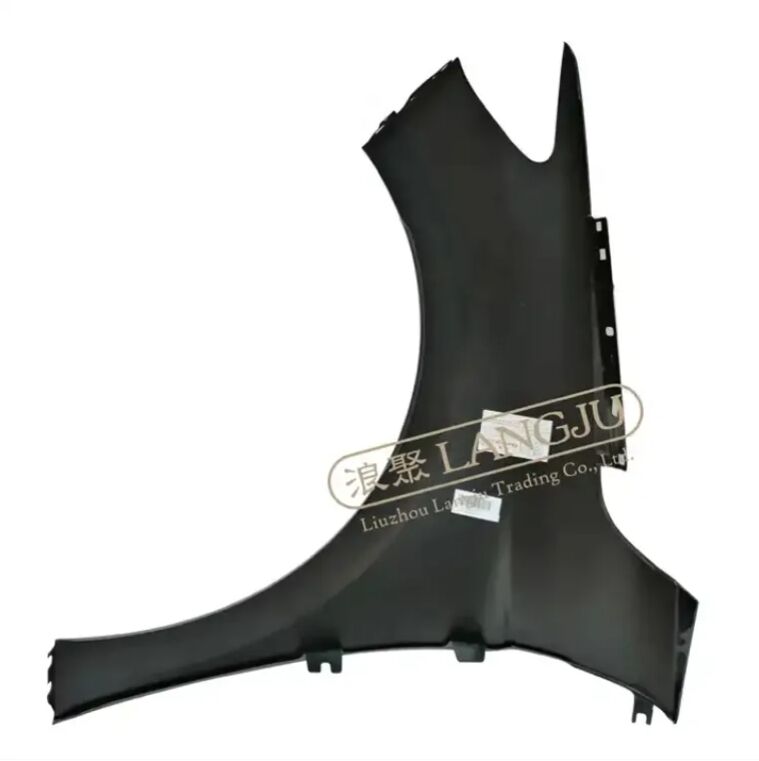Præcepta Cura de Fenderis posterioribus vehiculi
Freni Posteriora munere magno funguntur in protegendo vehiculo tuo a detritu lapidoso, aspersione aquæ, et damno potestativo. Hæc membra necessaria non solum formam vehiculi tui augent, sed etiam clypeos protectores pro corpore auto et aliis usoribus stradæ sunt. Sciens quomodo fendera posteriora rite servare et reparare possis, diuturnitatem eorum augebit et speciem atque operationem generalem vehiculi tui servabit.
Sive amator automobile sis sive proprietas vehiculi regularis, cura fenderum posteriorum debet esse prior in cura vehiculi tui. Haec compendium te per omnia ducet quae scire debes de retinenda tua fendera posteriora in conditione optima, a cura regulari ad tractandas frequentes causas reparandi.

De Fenderum Posteriorum Constitutione et Materialibus
Materialibus Frequentibus in Fenderis Posterioribus Moderne Usis
Fendera posteriora moderna typice ex variis materialibus construuntur, singula cum suis proprietatibus et cura necessaria. Ferrum manet electio popularis apud fabricatores multos, praebens durabilitatem et praesidium validum in casu collisionis. Aluminum popularius factum est propter proprietates levis et resistentiam ad corrosionem, dum plastica et composita materialia saepius in vehiculis hodiernis reperiuntur propter pretii efficaciam et flexibilitatem in designando.
Materiei electio magnopere influat in utramque partem, tam in conservationis rationes quam in restituendi artes. Exempli gratia, posticos fenders de ferro saepe cura maior adhibenda est ad vetustatem formandam, dum fenders de plastico fortasse cura speciali indigent ad prohibendum UV-nocere et ad coloris integritatem servandam diutius.
Formae Propriae et Eorum Impactus in Conservatione
Fenders posteriores hodierni complura designi elementa comprehendunt quae in conservationis necessitates influunt. Figurae aerodynamicae, systemata luminis incorporata, et moldings ornamentalibus omnia sunt diligentiae specialem postulatura in purgando et restaurando proceduris. Horum formarum cognitione accepta, idonea cura administrari potest et damnum accidens in conservando evitari.
Quaedam vehicula habent posticos fenders cum curvis et angulis complexis, eos magis obnoxios damno ab detritis viae et diligentius curandos in purgatione et maintenance proceduris. Praeterea, hodie designata plerumque continent sensorum integrationem et alios electronicos componentes qui in emendationibus tractari specialiter debent.
Rationes Maintenance Regulares
Purgationis et Protectionis Methodi
Purgatio recta posticorum fenderum plus quam simplicem lavationem requirit. Incipe cum diligenti irrigatione ad removendum detritum laxum, deinde purga cum saponem automotive apto usus mitti molli vel spanja. Adhibe specialem curam ad areas cavernarum rotarum ubi lutum et grima viae solent colligi. Pro optima protectione, considera applicationem sealantis vel ceramicae tecturae specifice ad fabricem tuorum fenderum compositam.
Inspectio regularis cavorum parietum et regionum circumiacentium adiuvat ad detegendos eventuales defectus antequam graviores fiant. Quaere signa de ruggine, sclopetis, vel damno tectorum protectorum. Munda omnia foramina drenagii ut aqua colligatur, quod ducere potest ad corrosionem in parietibus metallicis aut distorquendum in plasticis.
Custodia Preventiva
Strategiae praeventiva in manutenentia suscipiendis valde augere possunt vitam parietum posteriorum tuorum. Considera installare tabulas luti vel tectores proiectorum ut minimizes impetum detritorum. Regularis ceratio vel applicatio tectorum ceramicorum praebet tectum additum contra factores ambientales et chemica viaria.
Manutenentia per annis est praecipue necessaria pro parietibus posterioribus. Antequam hiemem, adhibe protectionem additam contra saltem viarium et chemica dissolvendi glaciei. In aestate, te concentra in protectione UV pro superficiebus plasticis et pictis. Inspectiones regulares debent includere examinare puncta iuncturae et confirmare omnes nectores esse tuto fixos.
Casus et solutiones frequentes in emendatione
Minorem Noxam Curare
Minor noxa posteriorum alarum saepe includit rascia, parvas concauitates, et scintillas picturae. Pro rasciis superfacialibus, adhibere compositem polituram deinde picturam emendationis solet restituere speciem. Parvae concauitates in metallicis alis sanari possunt per technicas expurgationis sine pictura, dum alae plasticae fortasse tractationem cretae ferri caliditatis requirent ut formam suam restituant.
Noxa picturae requirit curationem celerem ut formari ferrum in metallicis alis aut deteriorem plasticarum prohibeatur. Locum infectum diligenter munda, adhibe primum si necesse est, et adhibe picturam emendationis coloris congruentis secundum specificationes fabricatoris. Applicatio tectorii incolorem protectionem diuturnam et finitionem similem fabricae praebet.
De Emendationibus Maioribus Cogitare
Gravis damnum posteriorum camberum saepe requirit interventio professionalis. Hoc reparatio comprensiva de conquis dentibus, removal of rust, vel completa cambera substitutio. Cum de magnis reparationibus agitur, considera ratio praesentis, disponibilitas partium substituendarum, et effectus in tutela et functione vehiculi.
In vehiculis cum technologia integrata in posterioribus camberis, reparatio rationem tenebit de optime sensorum allineatione et functione. Fabricae professionalis reparationis habent instrumenta et peritiam necessariam ad omnes componentes post remedium vel substitutionem recte operari.
Cura et Emendatio Progressa
Curationes et Emendationes Professae
Considera applicationes operis ceramici professionalis pro superiori protectione furcarum tuarum posteriorum. Haec praesidia provecta protectionem diuturnam adversus vires ambientales praebent, faciuntque conservationem regularem facilorem. Opera professionalia de pictura restituenda superficies evanidas aut paululum laesas ad speciem originalem revocare possunt.
Praesidia post venditionem, ut sunt emendationes furcarum seu fragmenta ornamentalis, tam protectionem quam personalizationem aspectus vehiculi tui praebere possunt. At vero admodum cura ut omnes mutationes legibus localibus paret, ne primariam functionem protectivam fenderis compromittant.
Strategiae Protectionis Longi Temporis
Strategiam pro elaboratione protectionis diuturnae pro furcis posterioribus tuis effingere rationem conservationis regularis coniunctam cum periodicis praesidiis professionalibus includit. Considera conditiones climitis localis, itineris, atque conservationis vehiculi cum protectionis praesidiis comparandis.
Omne opus tenninationis et emendationis in foderibus posterioribus tuo factum describatur, una cum diebus et productis specificis quae usus sis. Haec ratio efficaciam variorum tractamentorum cognoscendi et consiliis de futura tenninatione comparandis adiuvat.
Saepe Interrogata Quaestiones
Quam saepe foderes posteriores inspici debent pro damno?
Inspectiones regulares mense singulo fiant, et insuper post omnia eventus meteoriologicos magnos vel post vehiculum in condicionibus asperis ductum. Ad areas ubi sordes et fragmenta plerumque colliguntur speciatim cave, et signa ruginis, concursum vel partes laxas quaere.
Quae sunt optima producta purgandi pro foderibus posterioribus?
Utere saponis automotivi pH-neutri pro purgatione regulari, et vitare detergents domesticos qui tueri possunt conternere. Pro foderibus metallicis, tractatus contra ruginam specificos cogita, dum foderes plasticis solutio protectiva UV et conditores vyni/rubber beneficiari possunt.
Quando auxilium professionale pro emendationibus foderum posteriorum quaerere debeo?
Praesidium professionale commendatur pro scalarum profundarum, notabilibus cavis, problematibus ferrugineis, aut quacumque damnum sensorum integratorum aut partium electricarum afficit. Praeterea, consulere doctum virum si opus sit picturam ad similitudinem fabricae aut cum robur structurae minari possit.

